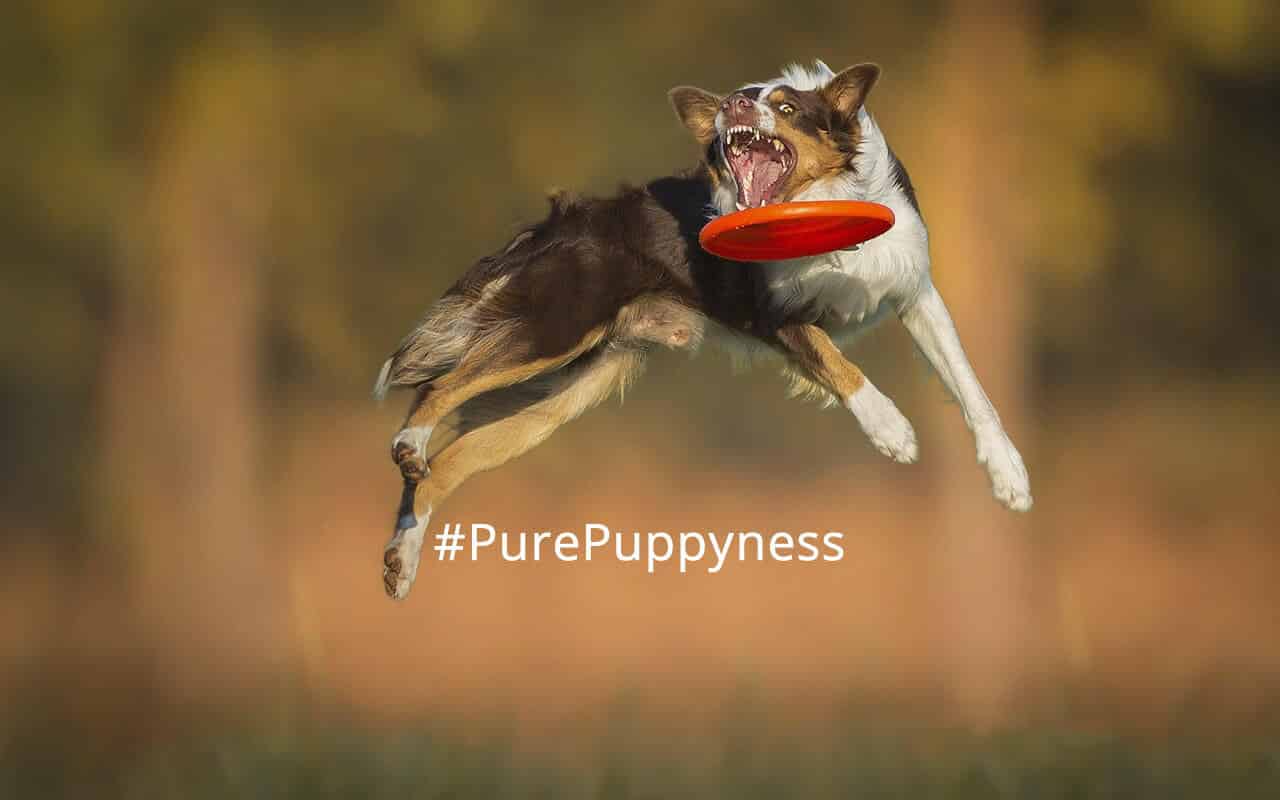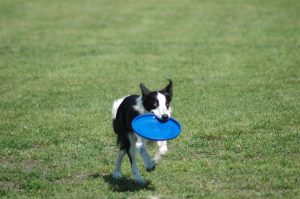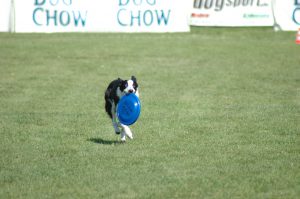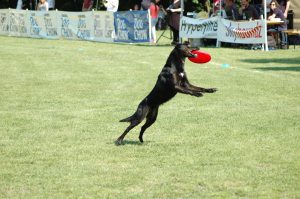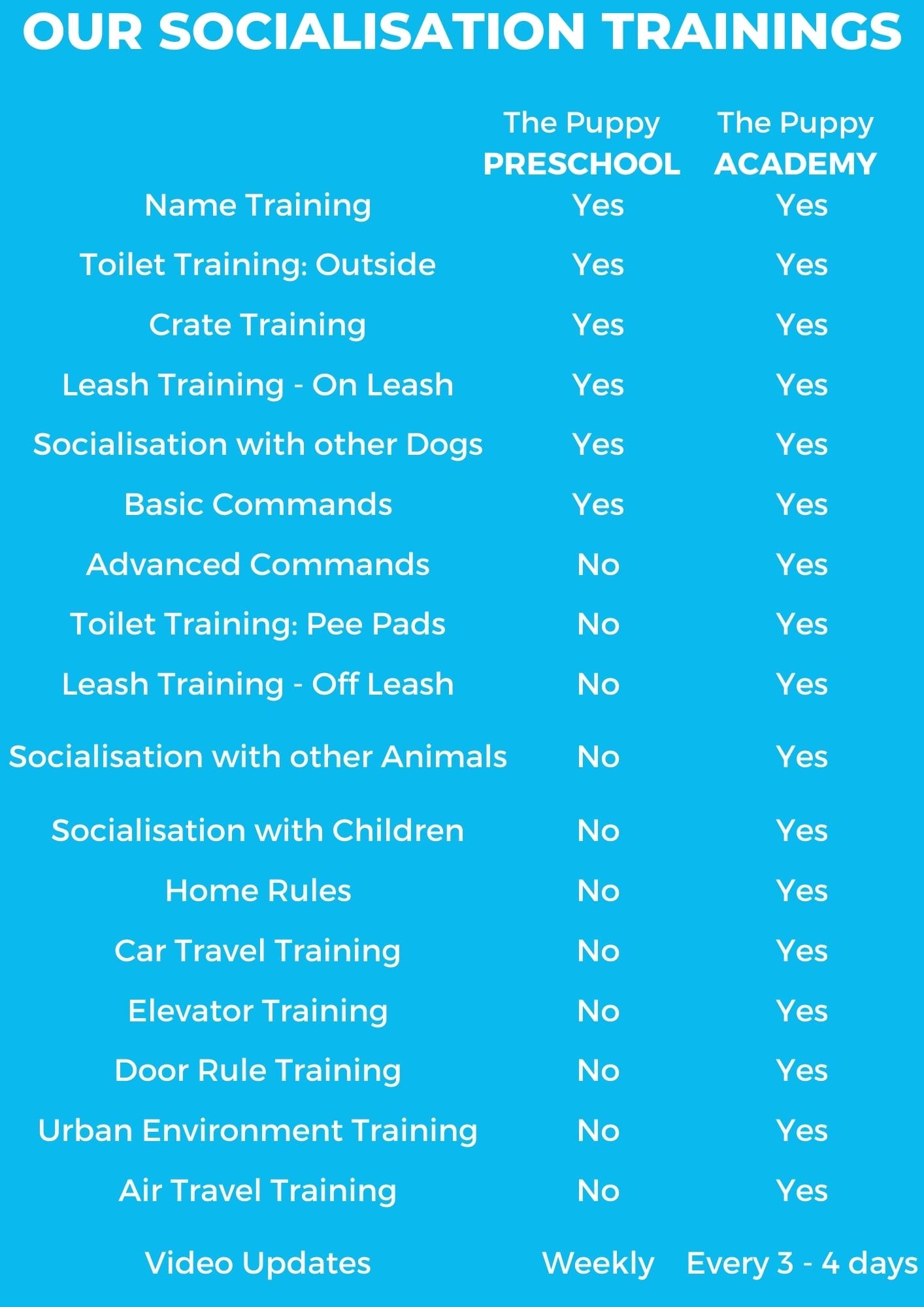Sport: Canine Agility
What is canine agility?
Canine agility is a sport for dogs and their owners. The dog/human pair must work as a team, with the dog completing a timed obstacle course (off the leash), and the owner directing the dog through the course. Common obstacles include jumps, see-saws, poles, and tunnels, but the dog may also be asked to sit and stay in a marked area (sometimes called the pause box) for a few seconds, or to climb an A-frame.
The dog must follow the owners’ instructions without toys or treats as an incentive. The owner can’t touch the dog or the obstacles, and must guide the dog using body and voice signals.
For a dog and human pair to even get a clear round in an agility contest, the dog needs to be exceptionally well trained. The dog owner needs to coordinate their commands with their dog’s actions, and spend plenty of time training. The pair needs speed and accuracy if they want to make it through the course.
Is canine agility right for you?
Sounds interesting, but is canine agility the sport for you? This sport is a really great way of exercising your dog both physically and mentally. Your dog can happily tire himself out dashing around the obstacle course, while learning to focus on your instructions. Agility training also prevents dogs from becoming bored, as they use both their physical and mental capabilities in this sport.
With practise, agility training can make your dog more reliable when off-leash. A dog who has learnt to sit and stay in agility to tackle an obstacle can also follow the same commands outside of training. Agility training can help to tackle behavioural or training problems, and can strengthen the bond between trainer and dog. Your dog will come to learn that you are fun to be around through agility training. He will become more and more willing to please and eager to listen to you.
Cost
If you decide to compete in canine agility, it can be expensive, as you’ll need to pay entry fees for most competitions or membership fees if you join an agility club. If you’d prefer not to compete, then agility training doesn’t have to be expensive. You can set up the obstacles in your yard or garden, or use those in a local dog park or agility club. Take some basic agility classes to get you started, then carry on training at home. There are tons of videos and websites to guide you, or you can continue to go to lessons to make sure you’re on the right track.
Is canine agility right for your dog?
Just about any healthy dog can do agility. The masters of the sport are Collies and other herding breeds, as they have the natural speed and agility for the sport. Since they were originally bred for herding, they are typically excellent at learning commands and obeying them, responding quickly even to body language.
Working breeds tend to enjoy canine agility, as they are highly intelligent and seem to enjoy the challenges of the sport and learning new things. Working breeds often become bored and destructive if they aren’t mentally stimulated, so agility can be a great outlet for a dog’s mental and physical energy.
However, dogs of all breeds can do canine agility, from the huge Great Dane to the tiny Papillon. Dogs will usually compete in categories based on their size, so the small dogs won’t have the deal with the larger obstacles that a German Shepherd or a Collie would be expected to tackle.
Dogs need to be at least one year old to compete in agility, though you can start gradually training a puppy before that time. It’s important not to overwork your dog, as this could lead to injuries. The same applies to older dogs.
Your dog should also learn basic obedience commands such as sit and stay before going on to do agility. These commands are useful in general, and can help during agility training.

